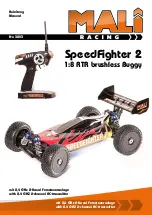
SKU 94670
For technical questions please call 1-800-444-3353.
Page 5
2.
Double insulated tools may be used in either of the 120 volt outlets shown in the following
illustration. (See Figure B.)
Figure B
EXTENSION CORDS
1.
Grounded appliances require a three wire extension cord. Double Insulated products can
use either a two or three wire extension cord.
2.
As the distance from the supply outlet increases, you must use a heavier gauge extension
cord. Using extension cords with inadequately sized wire causes a serious drop in voltage,
resulting in loss of power and possible tool damage. (See Figure C, next page.)
3.
The smaller the gauge number of the wire, the greater the capacity of the cord. For
example, a 14 gauge cord can carry a higher current than a 16 gauge cord. (See Figure C.)
4.
When using more than one extension cord to make up the total length, make sure each cord
contains at least the minimum wire size required. (See Figure C.)
5.
If you are using one extension cord for more than one tool, add the nameplate amperes and
use the sum to determine the required minimum cord size. (See Figure C.)
6.
If you are using an extension cord outdoors, make sure it is marked with the suffix “W-A”
(“W” in Canada) to indicate it is acceptable for outdoor use.
7.
Make sure your extension cord is properly wired and in good electrical condition. Always
replace a damaged cord or have it repaired by a qualified electrician before using it.
8.
Protect your extension cords from sharp objects, excessive heat, and damp or wet areas.
Specific Safety Rules for the AM/FM Band Radio
1.
Supervise children when they are using the Radio.
2.
Use only batteries of the type recommended-size “AA”.
3.
Do not mix old and new batteries. Do not use different types of batteries; do not use
rechargeable and alkaline batteries.
4.
Remove batteries if the Radio is not used for a long period of time.
5.
Dispose of old batteries properly. Make certain to follow all local laws and
restrictions for proper disposal.





























